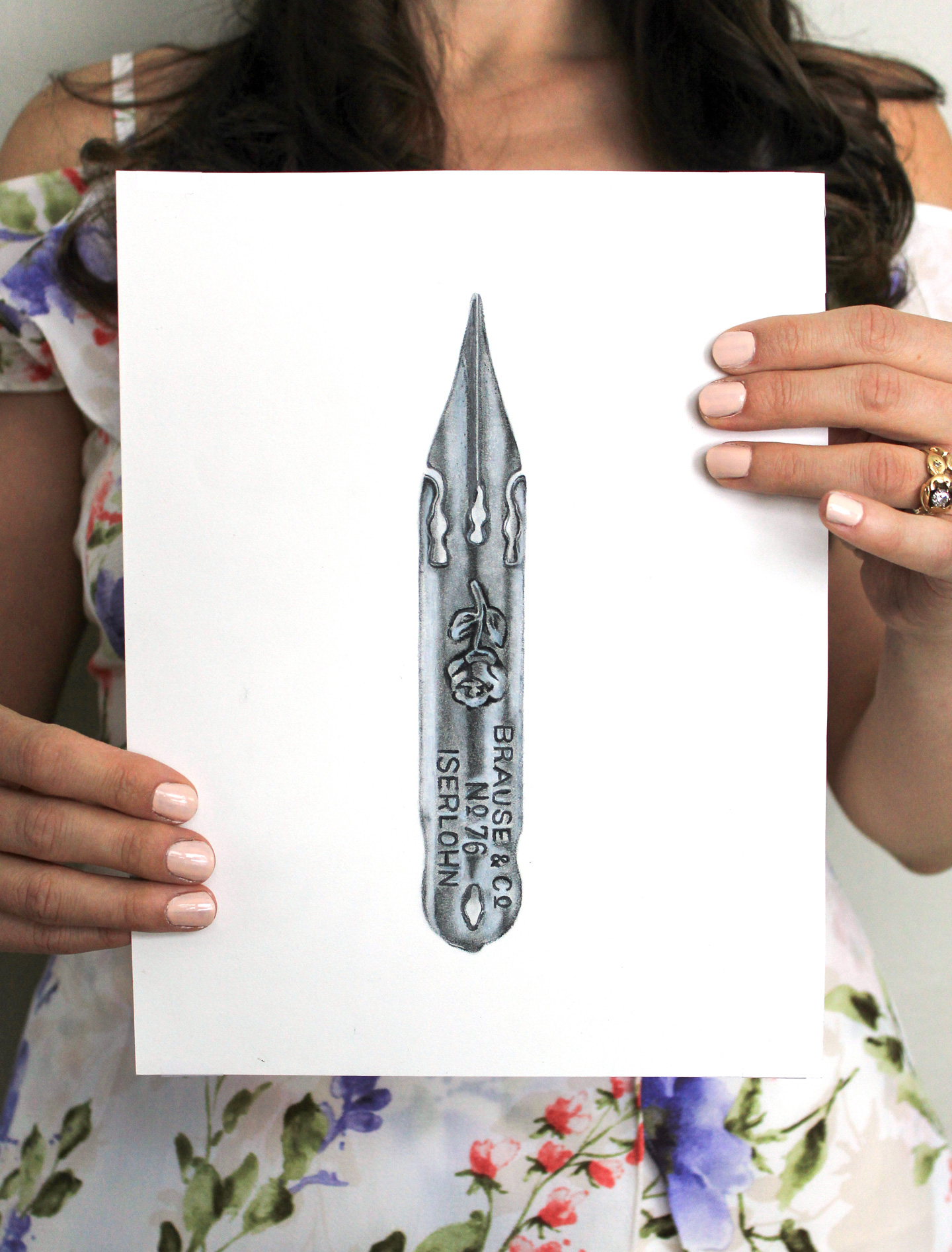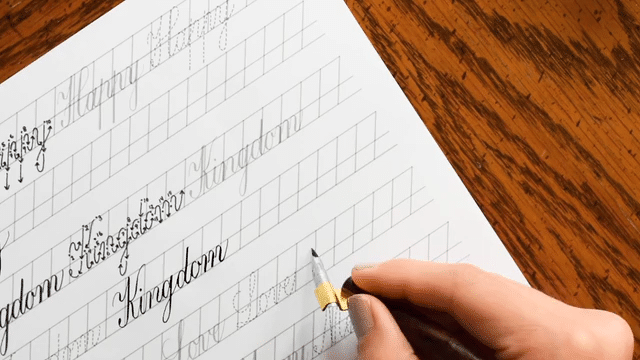
The first year that I started learning calligraphy, many key things eluded me. I couldn’t figure out what kind of paper to write on, how to get nibs to work, or how to practice, among other things. The frustration I experienced in trying to navigate the calligraphy world was what prompted me to write the TPK blog, and, specifically, articles like this one! My goal is to help you skip a lot of confusion and go straight to the fun part. In this blog post, you’ll find six “calligraphy hacks” to help make calligraphy creation easier — especially for beginners.
1. Use a Potato to Clean Your New Nibs
Every new, unused nib has oils or waxes on it from the manufacturer. The greasy preservative is good because it keeps nibs in great condition as they wait for you to purchase them. However, the downside is that when you receive the nib, chances are it won’t want to behave with ink (because oil and ink don’t mix well). Learners usually just assume that the troubleshooting is user error, but manufacturers’ oils are often the culprit — not you!

To get rid of manufacturers’ oils, you can stick your new nib in a potato. It’s only necessary to stick the pointy half of the nib in, since the blunt part won’t make contact with ink.

Let the nib sit for 15 minutes, then take the nib out of the potato and wipe it off with water and a non-fibrous cloth. Try not to exceed 15 minutes; otherwise, the nib may start to rust.

Once you wipe off the nib, it will be ready to write! Note that there are other ways to prepare new nibs for use, but this is my tried-and-true. I use it to prime the nibs for myself — and the nibs for all TPK workshop participants!
I love specialized calligraphy papers like Rhodia, but truthfully, 32# laserjet paper works just as well to practice on. Smooth laserjet paper is very cost-effective, and will work beautifully in your home inkjet printer if you want to print off calligraphy worksheets — like the Flourish Formal, pictured below — or drills.

If you’re learning calligraphy, I highly recommend keeping a ream of laserjet paper around. It’s a dream to write on with a dip pen because the ink doesn’t bleed or feather out.

32# laserjet paper is also nice and smooth, which means your nib won’t catch on it as much as it might with other papers. Whether you own a printer or not, you can’t go wrong investing in some of this paper to practice on!
3. Do Calligraphy Drills
While we’re on the topic of laserjet paper, your skill level can improve immensely with drills. You can print off the Not Your Average Calligraphy Drill Sheet below on laserjet paper, then fill it out! Doing drills will help you to regulate your nib pressure exertion, and will give you fun practice making different kinds of strokes.

Once you fill out the Not Your Average Calligraphy Drill Sheet, try doing the 11 Calming Calligraphy Drills sheet.

Keep doing drills every once in a while (shoot for at least once per week), and you’ll see your calligraphy improve immensely!
4. Cross Letters in Two Parts
Sometimes, you’ll experience “ink drag” when you go to cross letters like “t” or “x”. That basically means that your nib takes ink from a wet downstroke, and drags that ink as you cross the stroke. This leads to letters that look a little bit “off”, like the example letters below. You can see that on the right side of the t’s cross, there’s a bit of ink drag. There’s also ink drag on the bottom juncture of the x’s cross.

To avoid ink drag, you can make your letters in three parts instead of two. Start by writing the main part of your letter, then make the first half of the cross.

Pick up your pen, then draw the second half of the cross. Do you see the difference between the two letters on the right versus the two letters on the left? The two letters on the right are crisp and clear, without any ink drag.

5. Use a Light Box for High-Quantity Projects
When friends and family hear about your knack for calligraphy, chances are they’ll have an envelope project for you. If you need to write addresses on several envelopes, you can make a template to slip inside each envelope. The template can include guidelines as well as slant lines to ensure that every envelope is perfect!

Once you make the template, put it inside an envelope. Place the envelope on a light box, and you should be able to see right through it!

You can then use the guidelines that are shining through to write on the envelope.

Once you’re finished, there are no pencil guidelines to erase! That, paired with the fact that you don’t have to draw pencil guidelines to begin with, makes using a light box an amazing and efficient option. I honestly don’t know what I did without one!

The caveat for this “hack” is you must use a light-colored, non-lined envelope. Light boxes, unfortunately, cannot shine through darker envelopes. As far as which light box to get, I use an 11″ x 14″ Artograph LightPad 930 light box — I like it because it shines nice and bright. The only downside is the cost! There are, however, many light boxes with rave reviews available on Amazon — like this one — offered at a fraction of the LightPad 930 price! They will work just as well for envelope calligraphy.
6. Write with Watercolors
A few years ago, I was delighted to discover that you can write with watercolors! Watercolor calligraphy is very unique because you can use it to create a fun ombré effect. For example, in the woodland wreath envelope below, the address was written using a combination of blue and brown watercolor paints.

Watercolor calligraphy is also amazing if you’re traveling. My family travels internationally every year to visit my in-laws, and I always bring a dip pen, nib, and a set of dry watercolors in lieu of ink. It’s nice to not have to worry about ink getting all over the clothes in my suitcase!

To write with watercolors, you’ll start by moistening the watercolors that you want to create calligraphy with. Use a smallish paintbrush (around size 0) to paint those watercolors on the back of your nib. Give the nib a vigorous shake to get rid of excess water, and write as you would with normal ink! I know that explanation oversimplifies things a bit, so here’s a video showing you how to do it:
You can find additional information about how to create watercolor calligraphy in the Video Crash Course on Watercolor Calligraphy blog post.

I hope that you enjoyed these six “calligraphy hacks”, and that at least one of them comes in handy! If you have your own hack to add, please feel free to contribute it in the comments section! It’s always great to learn new ways to make calligraphy creation easier and even more enjoyable.
Thanks so much for reading TPK, and enjoy the rest of your day!
Warmly,

*This post contains affiliate links to Amazon





















